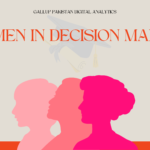
Women in Decision Making
July 18, 2024Women in Decision Making – Employment
July 19, 2024This article explores the state of women’s educational decision-making autonomy in Pakistan as reported in PSLM (2019), examining the roles and influences of various parties involved in shaping their educational choices.
1. Nationwide Analysis
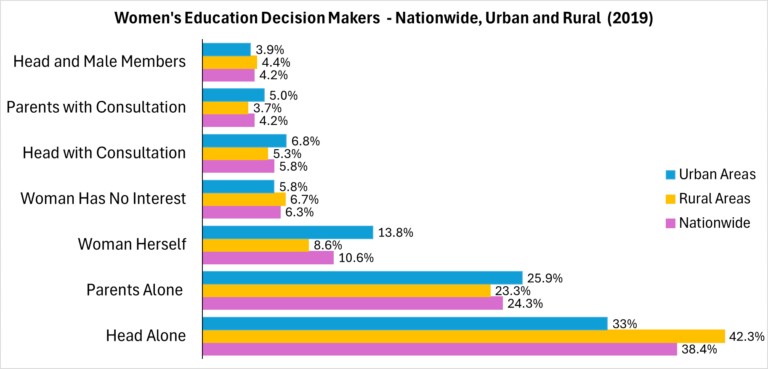
Source: PSLM 2018-19
Key insight 1:
In 2019, household heads alone made 38.4% of Pakistani women’s educational decisions, 42.3% in rural areas and 33% in urban areas.
Author’s Analysis:
- The data reveals that household heads, typically the breadwinners of the family, hold significant decision-making power nationwide (38.4%). As the providers of household income, they are the natural decision makers for any issues that warrant the use of household funds – including education.
- It can be inferred that elders’ and heads of the household are greatly valued and respected in Pakistani culture, with their decision being trusted to benefit all family members as a whole – even overriding the decision of parents alone (23.3%) and the women themselves (10.6%).
- Pakistani women and their parents may prioritize household head approval over personal autonomy due to deep-seated economic dependence and fear of losing incentives (monetary and
non-monetary). This is evident in rural areas (42.3%) where traditional family structures prevail, compared to urban areas (33%). - Given their limited exposure, economic dependence, and options, school/college-going girls often rely on parents or household heads to make educational decisions on their behalf. This is why around 60% of Pakistani women depend entirely on them for educational decisions.
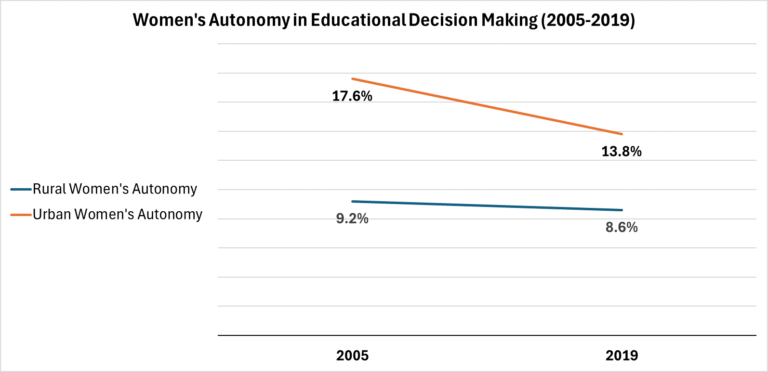
Source: PSLM 2005-2019
Key insight 2:
In 2019, only 10.6% Pakistani women made their educational decisions themselves, fewer in rural areas (8.6%) compared to urban (13.8%).
Author’s analysis:
- This small percentage of autonomous women in educational decision making may be because Pakistan is a patriarchal society – where men often hold significant decision-making power, and women’s autonomy is limited. Women may rely on their families for financial and emotional support, leading to a lack of independence in decision-making.
- Between 2005 and 2019, rural women’s autonomy in education decisions decreased by 0.6% (9.2% to 8.6%), while urban women’s decision-making power dropped by 3.8% (17.6% to 13.8%). Despite the larger decline in urban areas, urban women still maintained a higher level of autonomy (13.8%) compared to rural women (8.6%), perpetuating the urban-rural divide.
- In Pakistan, 6.3% of women, particularly in rural areas (6.7%), show no interest in making educational decisions, likely due to societal conditioning that decision-making is not their concern, exacerbated by limited access to information, guidance, and resources in rural areas.
2. Provincial Analysis
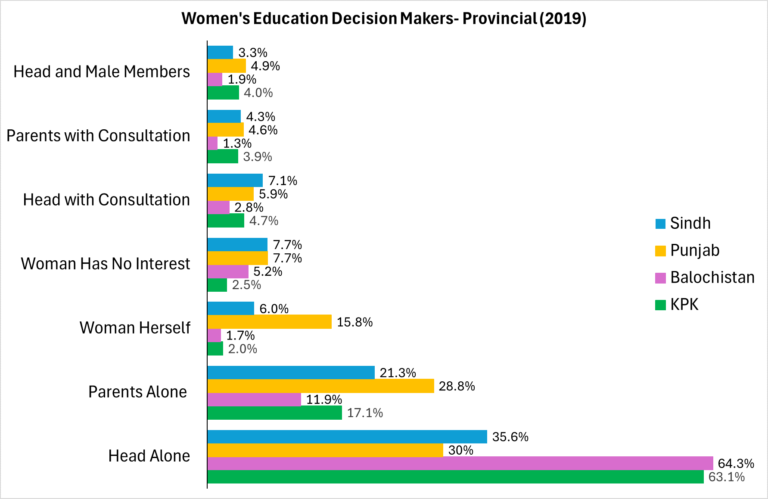
Source: PSLM 2018-19
Key Insight 3:
Household heads dominate women’s education decisions across all provinces: 30% in Punjab, 35.6% in Sindh, and a striking 63.5% in KPK and 64.3% in Balochistan.
Author’s analysis:
- In KPK and Balochistan, household heads wield significant autonomy, disproportionately higher than other decision-makers. This suggests a cultural inclination towards obeying the family head, extending to other domestic matters. Notably, Balochistan has the lowest literacy rate (40% in 2019), followed by Sindh (54%), indicating a correlation between decision-making dynamics and provincial development.
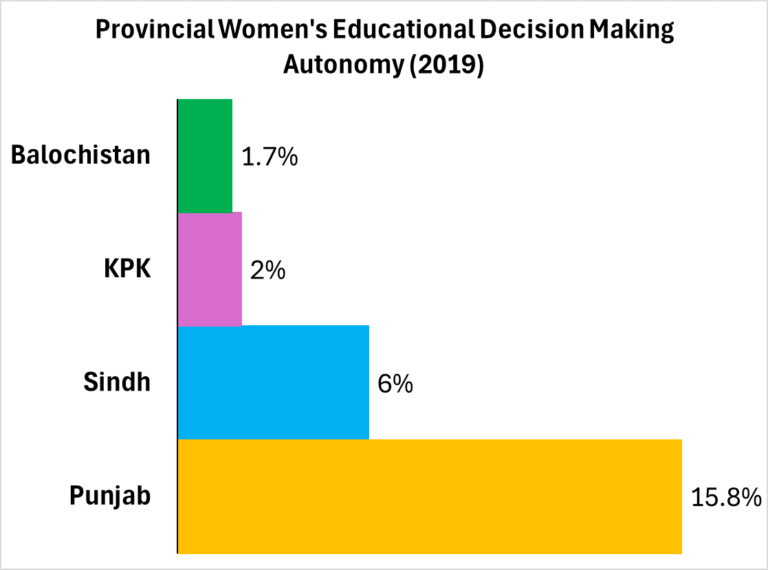
Source: PSLM 2018-19
Key Insight 4:
The highest proportion of females making their education decisions for themselves is in Punjab (15.8%) and Sindh (6.0%).
Author’s Analysis:
- Urbanization drives autonomy in education decision-making for women in Pakistan, as is seen by 13.8% autonomous women decision makers in urban areas compared to 8.6% in rural areas. These statistics are suggestive of Punjab and Sindh having superior and more gender-inclusive education opportunities and a stronger presence of women’s rights, compared to KPK and Balochistan. This empowerment may be the reason why Punjab boasts the highest nationwide literacy rate (64.8%), followed by Sindh (57.8%), as of 2019. Consequently, Balochistan is recorded to have experienced a 40% literacy rate – the least in Pakistan.
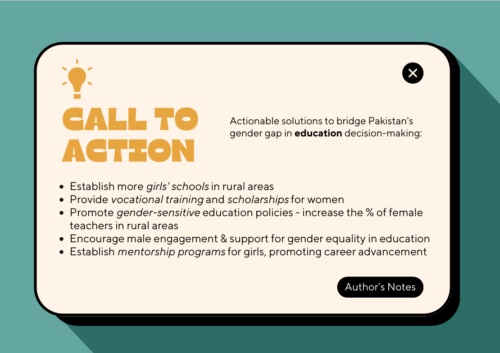
The data source used in this analysis is the Gallup Pakistan PSLM 2018-19 Data Dashboard, which provides an unparalleled glimpse into the socio-economic trends shaping Pakistan today. For a deeper dive into the data and to uncover more insights, explore the dashboard here.
Author: Maha Gardezi
Reseach and Analytics Intern, Gallup Pakistan
